Bangabandhu Textile Engineering College
Bangabandhu Textile Engineering College is a textile based research college located in Kalihati, Tangail. The college is academically operated by BUTEX and was previously affiliated with University of Dhaka under its faculty of science and engineering for nine years. It is one of the seven textile engineering colleges of Bangladesh which are collectively funded and controlled by the Directorate of Textiles, Ministry of Textiles and Jute.
বঙ্গবন্ধু টেক্সটাইল ইঞ্জিনিয়ারিং কলেজ | |
 | |
Other name | BTEC |
|---|---|
Former name | Bangladesh Institute of Textile Technology |
| Type | Public |
| Established | 2007 |
Parent institution | Bangladesh University of Textiles |
| Affiliation | Ministry of Textiles and Jute |
| Chairman | Prof. Engr. Md. Abul Kashem |
| Principal | Engr. Md.Bokhtiar Hossain |
| Students | 420 |
| Location | , |
| Campus | Suburban 11.5 acres (4.7 ha) |
| Language | English |
| Sports | Football, Cricket, Athletics |
| Website | btec |
Curriculum
The first year syllabus consists of Fundamental science in addition to basic concepts of textile engineering. From the second year onwards, students acquire a wide range of theoretical and practical knowledge in the area of textile engineering to equip them for future employment. In the third year students become capable of acquiring the full knowledge about Textile Engineering.
In the fourth or final year students are required to choose groups of subjects for specialisation. These include:
- Department Of Textile Engineering (Yarn Manufacturing)
- Department Of Textile Engineering (Fabric Manufacturing) & (Weaving and Knitting)
- Department Of Textile Engineering (Wet Processing)
- Department Of Textile Engineering (Garments Manufacturing)
They also undertake project work; have an industrial internship and must take a comprehensive viva.
Total credit: 160
Students
At present approximately 420 students are enrolled at the college. Of these, around 15% are female.
Admission
Admission procedure is administered by the Department of Textiles in Bangladesh. Students who have successfully passed and have received a Diploma in Textile Engineering can apply for admission. Admission is offered once a year, generally in June.BTEC have 120 seats. Admission of BTEC is highly competitive.
Hall Facility
There are 3 residential halls. Two halls for boys and one for ladies.
Facilities
Yarn manufacturing laboratory
This laboratory provides practical knowledge regarding the yarn preparing technology; both short staple (cotton) and long staple (jute). The laboratory facilities include conventional and modern machinery with the technology of open-end spinning and air jet spinning.
Weaving laboratory
This laboratory has the facility to weave cotton, synthetic and jute fabric including tappet, dobby and jacard. Available are hand-operated looms, ordinary power looms, automatic power looms and modern looms with CAD systems. Modern looms include air-jet looms, rapier looms with electronic jacquard and projectile looms.
Knitting laboratory
This laboratory is equipped with both warp and weft knitting machinery. The warp knitting machinery includes both the raschel and tricot machines, and the weft knitting machine include circular (single jersey, interlock, rib, jacquard) and flat knitting machines.
Wet processing laboratory
This laboratory includes machinery for singeing, desizing, mercerising, dyeing, printing and finishing and students are able to gain a thorough knowledge of wet processing technology. It has the facility for dyeing material as fibre, yarn and fabric and various style of printing. It also has computerised data colour system, gas chromatography and mass spectrometer, light fastness and other quality control equipment required to ensure high quality dyeing and finishing.
The wet processing laboratory has recently expanded. A new building named Dyeing Building has been recently completed, with the most recent and modern machines placed there.
Garments laboratory
The garments laboratory is equipped with all the types of cutting, sewing and finishing machinery used in the garment industry. It is also equipped with Lectra CAD-CAM system for computerised marker making, cutting and garments dyeing, washing and embroidery.
Testing laboratory
The testing laboratory has the facility to test fibres, yarn and fabric. The conventional and modern testing equipment includes an evenness tester, Classimat, single yarn strength tester, multifunctional Superba tester, HFT and electronic microscope.
Computer laboratory
A fully equipped computer laboratory provides practical opportunities for forty students at a time. Use of the Internet is available for teachers and students.
Electrical laboratory
This laboratory gives students the chance to become acquainted with electronic and electrical technology. It is equipped with pneumatic and electro-pneumatic control systems.
Physics laboratory
The physics laboratory is equipped with machinery and equipment suitable for graduate students.
Chemistry laboratory
The chemistry laboratory is suitable for forty students at a time to undertake practical work.
Engineering workshop
The engineering workshop is equipped with lathes, universal strength testers, shaping machines, cutting machines, drilling machines, welding machines, circular saws and various types of tools for carpenters.
Campus Sculpture
Chorka
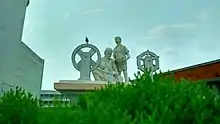

"Chorka" has been built to commemorate the lost heritage of Bengal. Its craftsman is sculptor Syed Saiful Kabir Ranju. If you enter through the main entrance of the institution, you will see the sculpture. The white sculpture is built on a 16 feet by 12 feet space with an altar. The part of the wheel is 5 feet above the main foundation.
Six-Point Square

The six-point movement is "Certificate of Liberation" of Bengalis.Through this the exploited Bengali nation got a new direction, got the target of the path of struggle for liberation from the shackles of subjugation. The six-point architectural has been constructed in honor of the historic 6 points raised by Bangabandhu. It was designed by Siraj Tarekul Islam, Assistant Architect, Department of Architecture, and the terracotta was designed by sculptor Syed Saiful Kabir Ranju. Built in [], the hexagonal courtyard is located in the center of the campus. When you enter the campus through the main gate, you will first see this eye-catching installation. The size of the main altar is about 120 feet by 120 feet. The architecture stands on 30 pillars, two and a half feet above the ground. There is a beautiful terracotta work in six stages. 6 points of historical significance have been beautifully painted in terracotta.
Bijoy Ekattor
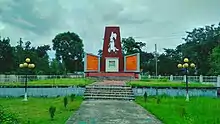
The monument "Bijoy Ekattor" has been erected to commemorate the spontaneous participation of the people of Bengal at all levels in the great liberation struggle of 1971 and to commemorate the glorious spirit of the war of liberation. It stands with its head held high at the six-point square angular opposite distance of the open stage of the campus. The installation was also done by sculptor Syed Saiful Kabir Ranju. The entire altar of this modern architecture is 71 feet long on the outside, 69 feet long on the inside and 52 feet wide. Which is indicative of the historical liberation war, mass uprising and language movement of Bangladesh. In keeping with the 21st of February, the main altar has been measured at 21 feet. The terracotta part is 9 feet. The height of the installation is 23 feet, the front part of the white pillar is 7 feet and the part of the stencil cut hero soldier is 16 feet. These numbers that are reminiscent of immortal memories such as the war period, March 7 and Victory Day.
Photo Gallery
BTEC Main Gate:

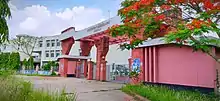

Campus View:
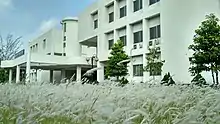
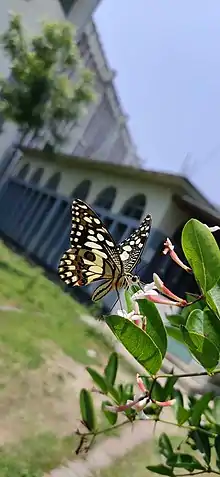
Campus Sculpture:



Hall:






Others:
_.jpg.webp)
_.jpg.webp)